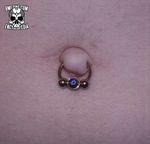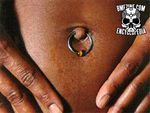Ball Club Quarterly and True Navel: Difference between pages
(Difference between pages)
Jump to navigation
Jump to search
(Created page with "<html><div class="mw-content-ltr" dir="ltr" id="mw-content-text" lang="en"><p><b>Ball Club Quarterly</b> was the magazine brainchild of <a href="/index.php?title=Kenneth_Schein" title="Kenneth Schein">Ken Schein</a>. </p><p>In the "dark days" before Internet access was a common luxury, Schein sold subscriptions to his hastily photocopied contact lists to a limited readership (<i>at their peak, the circulation was estimated at 1000 BCQ and 200 Unique subscribers worldwide...") |
(Page conversion via llm-mediawiki-rev -jwm) |
||
| Line 1: | Line 1: | ||
A '''true navel piercing''' is a piercing that passes through the belly button itself. [[Navel piercings]], as the word is commonly used, are through the rim of the navel — skin, which is not actually a part of the navel structure, but a part of your stomach's skin. Naturally, an "outie" (to some extent) is required. | |||
Contrary to urban legend, this will not — except in people with really bad luck (or really bad hygiene) — draw an infection into your liver or peritoneum, and is not generally life-threatening. It is however ''extremely'' rare. | |||
{| style="text-align: center;" | |||
|- | |||
| [[File:True_Navel_Piercing-1.jpg|thumb|right|150px|True Navel Piercing]] | |||
| [[File:True_Navel_Piercing-2.jpg|thumb|right|150px|True Navel Piercing]] | |||
| [[File:True_Navel_Piercing-3.jpg|thumb|right|150px|True Navel Piercing]] | |||
|} | |||
== Related Risks == | |||
* [[Peritonitis]] | |||
== Related Entries == | |||
* [[Navel Piercing]] | |||
Latest revision as of 21:30, 25 September 2023
A true navel piercing is a piercing that passes through the belly button itself. Navel piercings, as the word is commonly used, are through the rim of the navel — skin, which is not actually a part of the navel structure, but a part of your stomach's skin. Naturally, an "outie" (to some extent) is required.
Contrary to urban legend, this will not — except in people with really bad luck (or really bad hygiene) — draw an infection into your liver or peritoneum, and is not generally life-threatening. It is however extremely rare.


